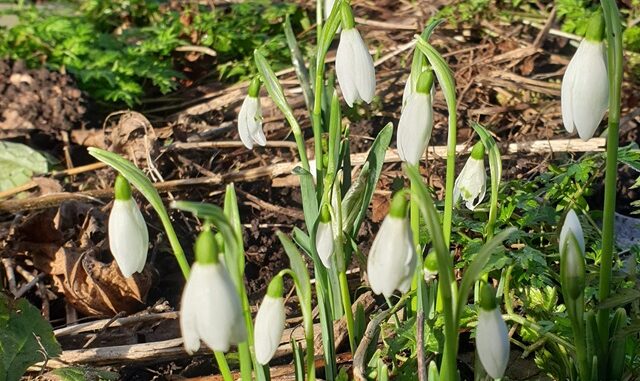
By Nick Condron
As February begins with a beautifully bright and warm sunny day, there are already signs around the Garden that nature is awakening.
The first of the snowdrops are pushing through the bark mulch on the floor of our small woodland. Above them, the pale yellow hazel catkins, which are the male flowers, are hanging delicately and shimmering in the light. Looking closer at the stems, it’s also possible to see the tiny red filaments of the female flowers sticking out from small green buds.
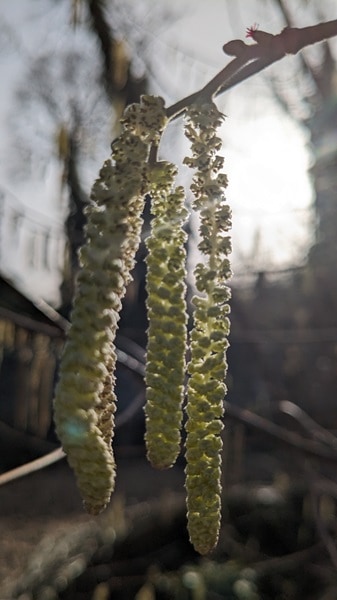
The white brambles that we planted beside the back wall several seasons ago have grown well and developed striking, thick and very thorny stems that are beginning to arch over and put down roots where they meet the earth as intended. There is a hint of that rich organic smell the soil takes on as it comes back to life after dormancy.
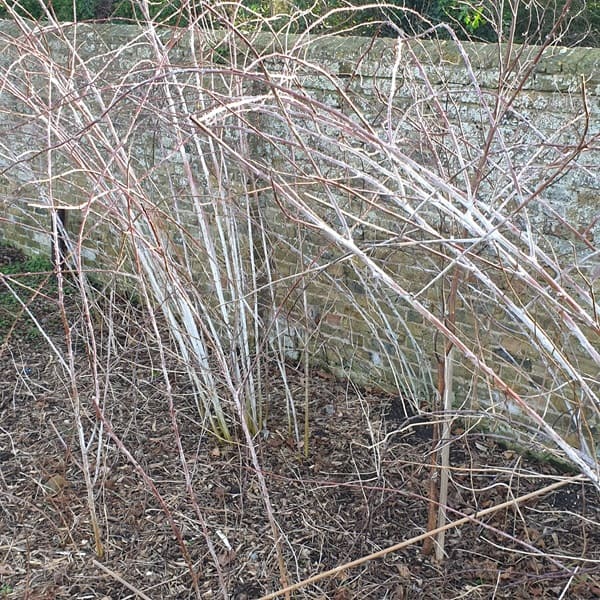
We are visited by the locally based gardener and experimental sound artist Rosie Carr. She has brought along some highly sensitive contact microphones to see if she can record what’s going on inside our compost heaps. Listening intently through the earphones it’s possible to hear several types of sound. There are some distinct thumps and other noises of movement or life and we can only imagine whether they’re being made by small mammals, insects, earthworms or even microorganisms. It will be interesting to hear how she uses the recordings in her work further down the line.
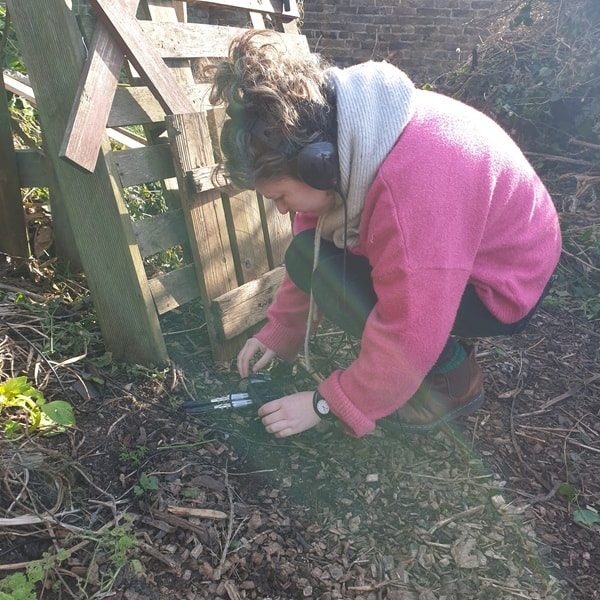
Next to our existing compost heaps, Brian and Michael are busy re-using wood from pallets to build some more bays which will be used for hot composting. This is an accelerated method where organic materials decompose quickly due to high temperatures, typically between 130-160°F (54-71°C).
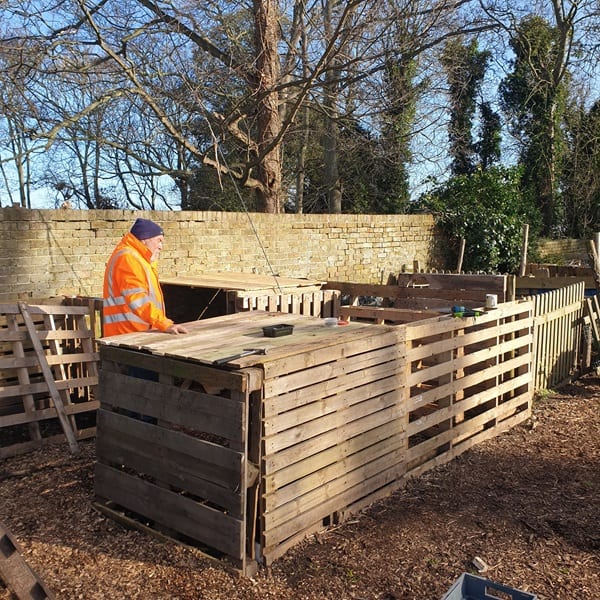
To initiate the process, a well-balanced mixture of green and brown materials is essential. Green materials, such as kitchen scraps and fresh garden waste, provide nitrogen, while brown materials, like dried leaves, straw and shredded cardboard contribute carbon. Achieving this balance is crucial for creating an environment conducive to microbial activity, which is responsible for the rapid breakdown of the organic components. The heat generated by microbial activity speeds up decomposition, and helps in killing weed seeds and pathogens present in the organic matter, resulting in nutrient-rich and more sanitised compost relatively quickly in a timeframe of a few weeks to a few months.
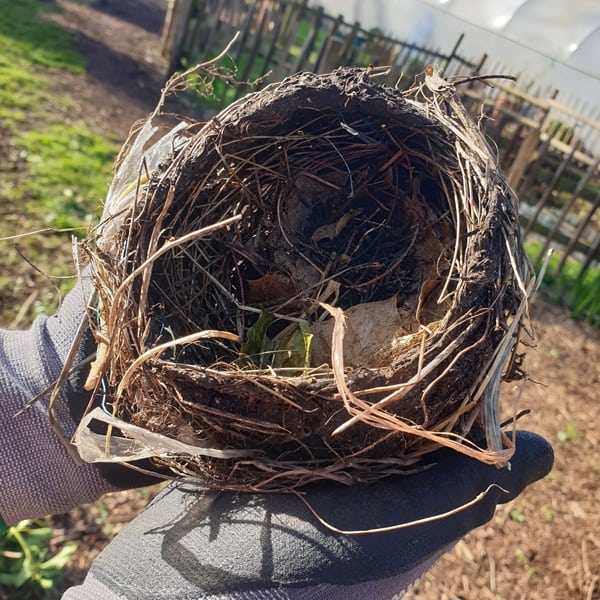
As we ponder these natural sounds and processes, Conker joins us with an old, abandoned bird’s nest they’ve found whilst pruning back some of the ivy that has grown up and over one of our taller tree stumps. It’s fascinating to see how man-made elements of plastic have been woven in along with the dried earth, grass and leaves. As gardeners, it’s always interesting to reflect on where the line of our own intervention in nature is drawn. In this moment, the nest looks in some ways like a microcosm of our own work in the Garden as a whole. Working lightly, but diligently with what comes to hand to make as supportive an environment as possible for new life to flourish.
Stepping inside the polytunnel, the warmth of the day is even more noticeable. The fleece sheeting that we covered the frost tender plants with over winter has been removed and they’re making the most of the sunlight.
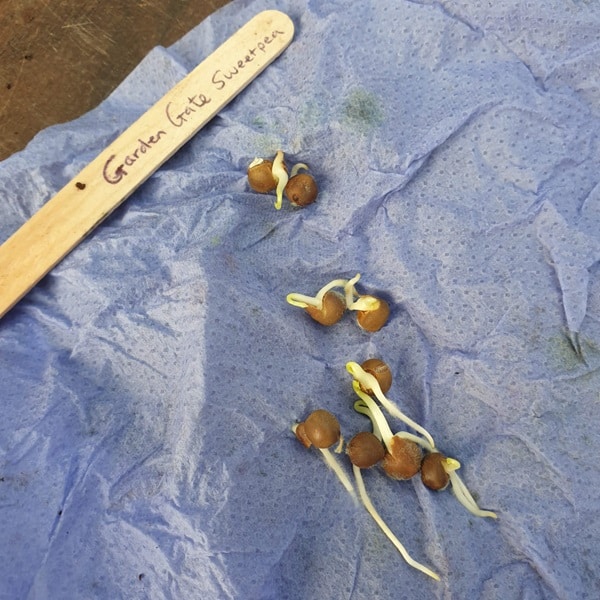
On the seed bench are some sweet pea seeds that have been chitting for a week or so, on a moist kitchen towel in a jar in a warm place to help kick-start their germination. If you’re doing it yourself, ensure the towel stays consistently moist, and transplant the sprouted seeds into soil once they’ve developed roots.
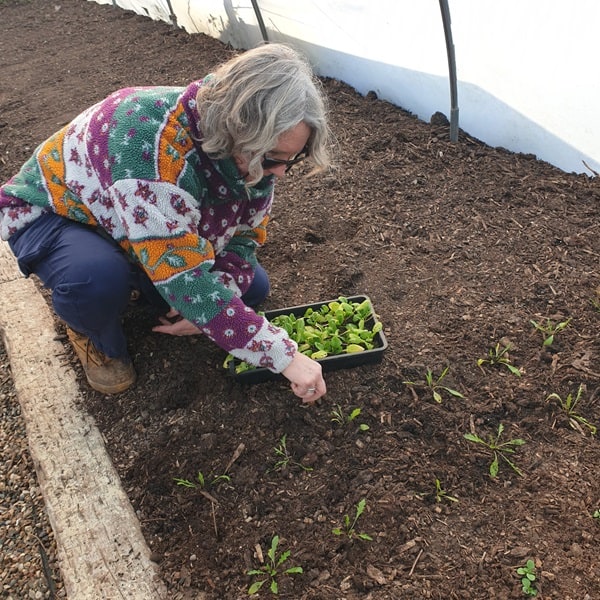
We’re also beginning to sow lettuce seeds for an early crop, and in our smaller polytunnel Angie has begun planting out rows of Lamb’s lettuce, rocket and spinach. It won’t be long before we’re tasting the results of our hard work once more.
If you’d like to see the Garden emerging into spring, then remember we’re open to visitors from 10 am to 3 pm on weekdays. We look forward to seeing you, and in the meantime happy gardening!

